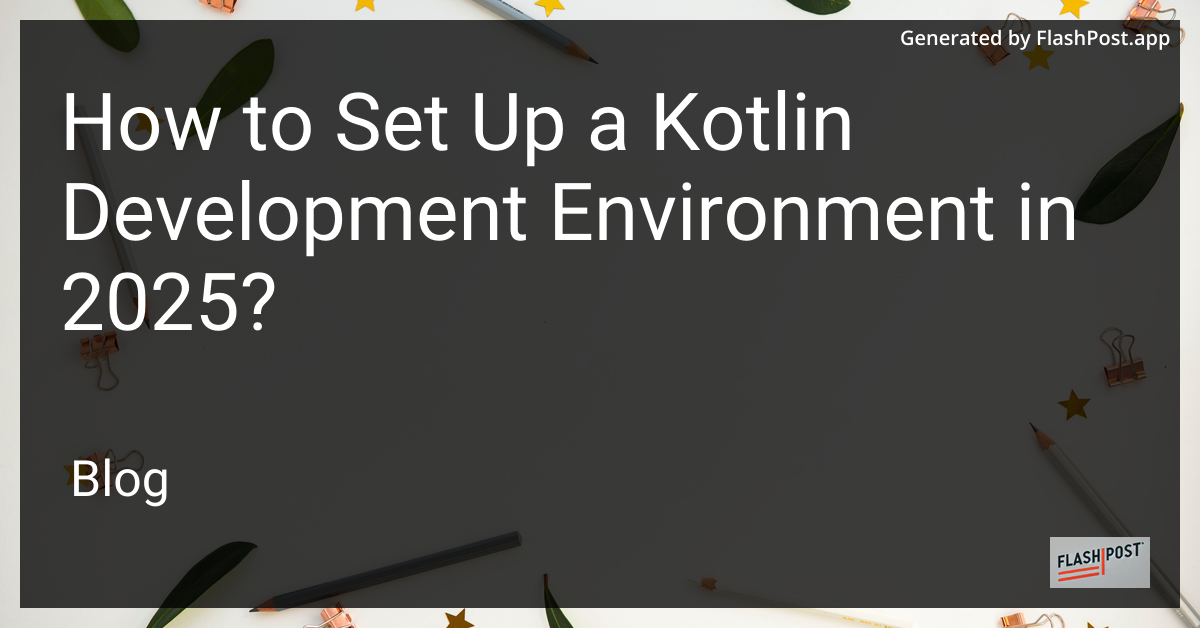
How to Set Up a Kotlin Development Environment in 2025
Setting up a Kotlin development environment in 2025 has never been easier. Kotlin, with its impressive versatility and modern features, continues to be a top choice for developers around the world. Whether you're a seasoned programmer or just starting, this guide will walk you through the essentials of setting up your environment for Kotlin development.
Step 1: Install Java Development Kit (JDK)
Kotlin runs on the Java Virtual Machine (JVM), so having the latest Java Development Kit (JDK) is crucial. Head to the official Adoptium website and download the most recent version. Once downloaded, follow the installation instructions specific to your operating system.
Step 2: Choose an Integrated Development Environment (IDE)
In 2025, several IDEs have continued to lead the pack for Kotlin development. IntelliJ IDEA remains a favorite among Kotlin developers, thanks to its Kotlin-first approach. VSCode with the Kotlin plugin is another excellent choice if you prefer a lighter editor. Install your chosen IDE and proceed to the next step.
Step 3: Configure Your IDE for Kotlin
Open your IDE and go to the plugins section. If you're using IntelliJ IDEA, you may find Kotlin already integrated. Otherwise, search for the Kotlin plugin and install it. This plugin includes essential tools and libraries to support Kotlin programming efficiently.
Step 4: Create Your First Kotlin Project
Once your environment is set up, it's time to create your first Kotlin project. Open your IDE, select "New Project," choose Kotlin from the list of languages, and follow the wizard to create a basic console application. Congratulations! You're now ready to start coding in Kotlin.
Additional Resources to Enhance Your Kotlin Experience
As you continue your Kotlin journey, these resources can be incredibly helpful:
- Explore Kotlin's scripting capabilities with the Kotlin scripting guide.
- Learn about how Kotlin improves code readability and reduces boilerplate with our article on Kotlin programming benefits.
- Discover how to efficiently save custom objects into preferences by visiting Kotlin preferences.
With these steps and resources, you're well on your way to mastering Kotlin development. Enjoy your coding journey!